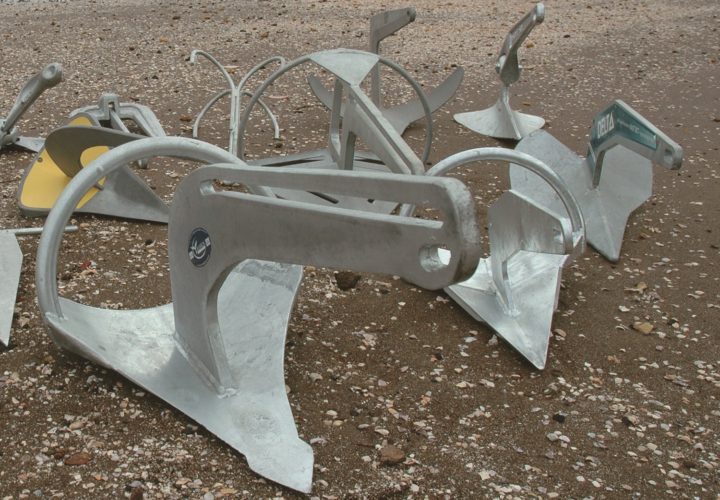Modern designs and state-of-the-art engineering have made anchors not only better, but lighter, too! In a lot of cases the best holding anchors are actually the lightest! Anchor design has more effect on holding power than weight does.
There are certain very important attributes you should keep in mind when selecting an anchor. Will it set quickly, and hold in a variety of different bottom types? Can it withstand significant loads? Is it easy to deploy and retrieve, and is it easy to store? There are essentially three categories of anchor. First, there are those with deep penetrating, lightweight, pivoting flukes such as the Danforth, Kewene or the Sealock. These are great for muddy and very soft bottoms. Second, there are the plough-style anchors such as the Bruce, Delta, Manson Plow and SARCA. These have excellent structural strength and are good general purpose anchors. On the other hand, they tend to set more easily due to increased weight. Finally, there are the ‘new generation’anchors for the real serious anchorers. Variations on all of these traditional designs exist, and new ones seem to pop up all the time. Sand is relatively easy for anchors to penetrate. Most anchors will hold best in hard sand. The Danforth and Kewene anchors work very well in sand. Mud, on the other hand, has low shear strength, and requires an anchor with a wider shank-fluke angle and greater fluke area so that the anchor will penetrate deep to where the mud has greater shear strength. Mud is frequently thin and layered over some other material.
Thus, anchors that can penetrate through the mud to the underlying material will hold better. Fortress anchors (an aluminium danforth pattern type) work very well in mud, because they can be converted to a broad fluke angle. Rock and coral bottoms present different challenges. Here, holding power is more dependent on where you happen to drop the anchor, than on the type of anchor you have. As a general rule most anchors will stick (get stuck in) to rocks well but this is the best ground for a grapnel. Grassy or weedy bottoms present tough challenges for all anchor designs. Here, it is the tip weight and cutting edge of the anchor, that is the most important factor. We teamed up with Grant Macduff from Chains, Ropes & Anchors a major supplier of anchoring systems and took a selection of more well known anchors and set them
into the sand to see what they did and also looked at the designs of the anchors themselves.
Kewene
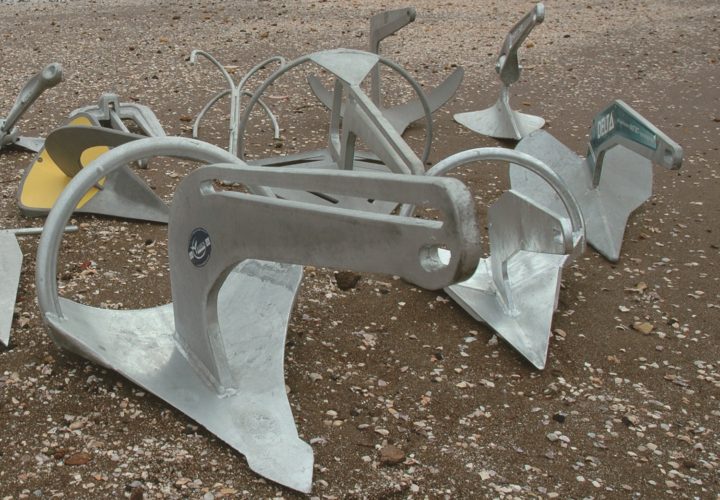
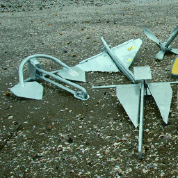
Designed and made in New Zealand, it’s a general-purpose anchor, good in soft bottoms, as is a Danforth. For rockier conditions it has a sliding shank to make retrieval easier. Good-sized anchor for boats under 30ft, otherwise they can start getting a bit too big for good bow fitting. A very popular small boat anchor.
Danforth Pattern


The Danforth is very good in soft bottoms, really good in soft ‘soupy’ bottoms. Their point design really helps them embed themselves. They are a very common anchor; it seems it’s what every boat dealer sets the boat up with when you buy it. It’s important that you get one from a quality manufacturer. A few of the Chinese imported ones aren’t quite up to scratch.
Sealock
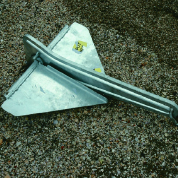

The Sealock has some neat innovative features incorporated into the design. A sliding shank on both sides means that the anchor can be easily retrieved if it becomes stuck. A good blade area means that the anchor is ideal for soft muddy conditions, but due to the angle of the blade from the shank, isn’t good in harder sandy conditions.
Mini Haul/Dreadnought

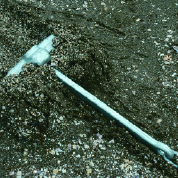
The mini haul is very small for its weight, holds really well, and has a shank that slides back and forth to aid in retrieval. Having no sharp edges they are ideal for small inflatables.
Folding Grapnel
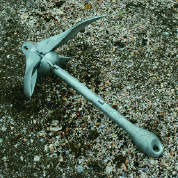

For storing away, folding grapnels are good, as they do what they say, and fold down. They are really popular on small dinghies, kayaks and small inflatables, but not really all that suitable for bigger boats.
Fixed Grapnel Pic 7
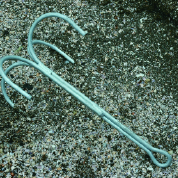
The fixed grapnel has been around for years, and is a must if you are anchoring around rocks. If it gets stuck, you can just pull on it until it gives way, then just repair the prongs in the vice (rowlok holders in your dingy) when you get home.
Spade


Spade anchors come out of Tunisia and have been available for around 10 years. They started the new generation high performance anchors, ideally suited for bigger trailerboats and priced accordingly. They are available in steel, Stainless and aluminium, the aluminium models being suitable if weight is a consideration. They have the highest amount of tip weight, this helps the anchor set really fast. Very popular with the Cruising yachties who depend on their gear which tells you something.
Rocna
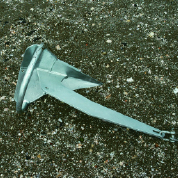
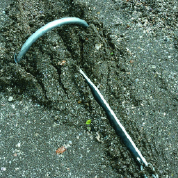
The new generation Rocna is another New Zealand designed and manufactured anchor. It’s a good strong anchor, and has proven very popular with the trailerboat market. A Rocna attains the correct attitude for penetration, and with its combination of chisel tip, roll bar, and skids, it buries well in most seabeds – typically within one metre. A Rocna’s roll bar ensures that the anchor will turn itself to the correct attitude for setting, every time. The skid-rails then direct the blade into the seabed. This also eliminates the need for dedicated tip-weight.
Manson Supreme
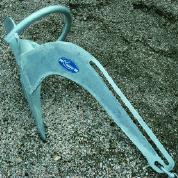
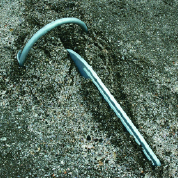
Also a new generation anchor; the Manson Supreme is the latest offering from this New Zealand manufacturer. It has a concave design, which relies on surface area for holding power rather than physical weight. The twin slots on the anchor shank enable use in all seabed types. When anchoring in rocky or coral situations, switching the anchor rode onto the rock slot means that if the anchor becomes lodged or jammed, the shackle can slide to the front of the anchor and simply lift forward. The anchor has been reviewed by Lloyds Register of Shipping and Manson received SHHP (Super High Holding Power) status. It is the first and only production boat anchor in the world to do so. Well-done Manson.
Sarca
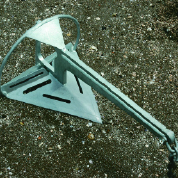
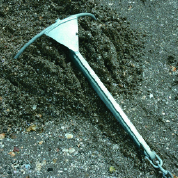
Originating in Australia, it sets very well due to its shape, and is well suited to firm bottoms, where it will dig into the hard surface and hold on well. It has a sliding shank to help in retrieval. A downside is that it does cause a lot of disturbance to the sea bottom, probably not making it that environmentally friendly. A positive of that though, is that it will churn up food out of the bottom for feeding fish, so your catch rate will improve!
Claw Pic
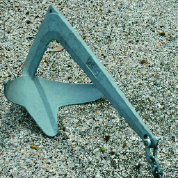
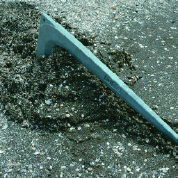
A The claw is basically a knock-off of the genuine Bruce anchor. The genuine Bruce has an excellent reputation, sets very well and has good holding power. Most claws, as long as they are a good copy, are good quality. The claw does have a habit of letting go under extreme load. More popular on bigger boats. Watch the quality on some of these.
Manson Plough Pic


An old design, but exceptionally popular and highly regarded around the world. They set reasonably well, and work best if you set them slowly. They are good general-purpose anchors that work well in most conditions. The plough’s versatility and good holding power has made this arguably the most popular anchor in NZ.
Delta Pic
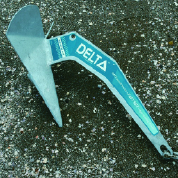
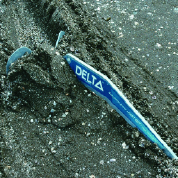
The Delta is a plough style anchor, generally sets a bit better than other ploughs that have the swivel shank. A good general-purpose anchor, the low centre of gravity and self-righting geometry ensure that the Delta anchor will set quickly. They are also available in premium grade Duplex/High Tensile stainless steel.
Generally, most anchors don’t like being set at speed. In fact, many people just drop the anchor and don’t set it at all and don’t realise that that’s not the best way to do it! You should lay your anchor as you’re moving slowly backwards, until you feel it begin to ‘bite’, then apply a little more power in reverse to set it into the bottom.
If you try and set an anchor too fast, you’ll find that it will skip along the bottom, or suddenly set and cause damage to your winch. This is quite likely with the new generation anchors, as their design will cause them to set and stop you pretty quickly, so passengers had better be holding on! Many people regard the anchor in its own right as just an anchor. However, they should regard it as part of an anchoring system. An anchor will work better with chain behind it, and an anchor straight on the end of a piece of rope won’t work as well. You have to have a matched set. It’s important to realise that the main purpose of the chain is to provide sufficient weight to keep the angle of attack of the anchor within its design limits, and that the harder it’s blowing, or the faster the current flow, the more chain is required. The weight of the chain also provides a dampening effect so you don’t shock load your anchor out of the ground or winch/cleat out of the deck. It also pays to buy quality rather than buying to a price. For instance, there are a lot of knock-off ploughs, Bruces, danforth anchors and chains coming out of China, which the experts say, just aren’t up to the standard of CQR, Manson, Spade and the other NZ made anchors. When you consider the value of the boat an anchor is protecting and the fact it stops you from waking up on the rocks, an anchor is no place to economise. It pays to get the best performing anchor system you can.


